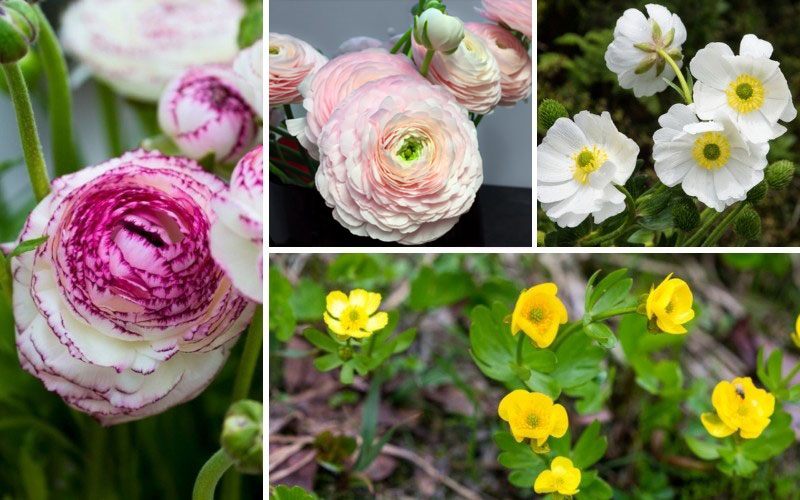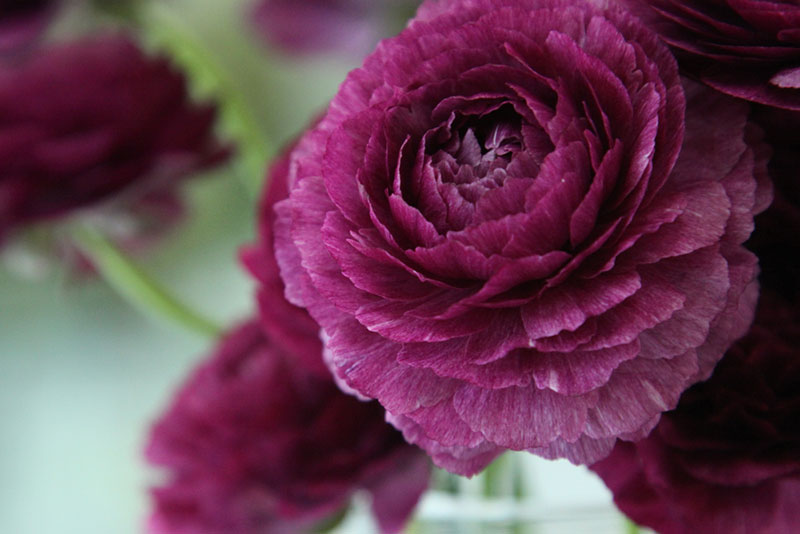
Ranunculus is a genus of plants that includes approximately 600 species of flowering plants. It includes the common buttercup that grows wild throughout the U.S. But the cultivated variety (Ranunculus ‘asiaticus’), commonly referred to as Persian buttercups, produces large showy blooms that resemble roses. Here’s a list of the different varieties of Ranunculus.
These tender perennial plants can be grown as perennials in USDA plant hardiness zones 8 through 10 but must be grown as annuals in cooler zones.
Whether in the flowerbed or in containers on the deck, these flowers are showstoppers when it comes to color and beauty. Flower colors range from white, yellow and orange to brilliant shades of red.
Ranunculus grows to heights of 1 to 2 feet with a similar spread.
Growing Ranunculus
Light and Temperature Requirements
Ranunculus prefers full sun but does not like the heat. In fact, it prefers temperatures between 55 and 70 degrees. Temperatures above 70 degrees will cause ranunculus to slow or cease blooming.
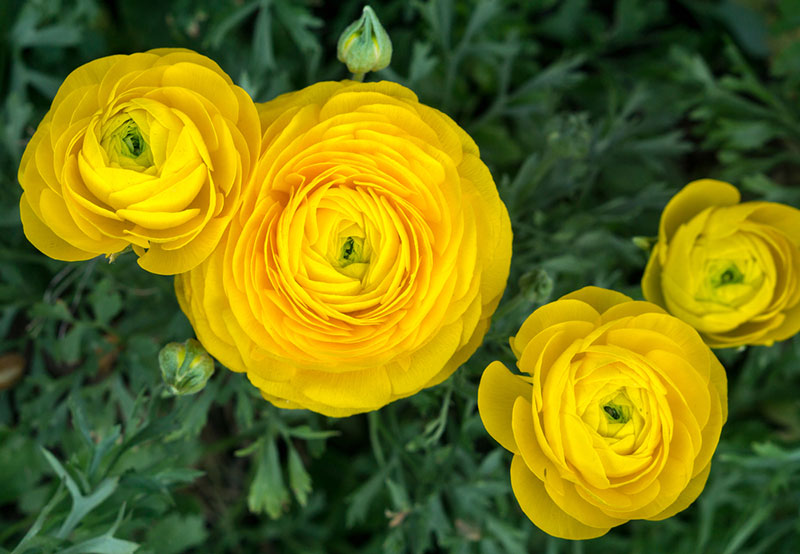
In the south where they can be planted in the fall for late winter or early spring blooming this is not an issue. However, growing them as an annual for summer or fall blooming in the north can sometimes be a challenge as hot weather may strike at or near blooming time. The solution, perhaps, is to grow ranunculus in containers so that you can move them to a cooler location if you get hit with high temperatures and the blooms begin to suffer.
Watering
Ranunculus prefers evenly moist soil but will suffer in soil that remains soggy as the corms and roots will rot. As a rule, water ranunculus when the soil feels dry 1 inch below the surface. Ranunculus grown in containers require more frequent watering as the soil in containers dries quickly in the summer sun. Water them until water runs freely through the bottom of the pot and water again when the soil feels dry, or you notice signs of wilting. Container-grown flowers may require daily watering during hot spells.
Soil & Fertilizing
Ranunculus prefers humus-rich well drained soil. Amend the soil with a 2-to-3-inch layer of compost, peat moss or well-rotted manure and work it into the existing soil. This improves aeration, promotes good drainage and provides your ranunculus plants with slow-release nutrients. Add a tablespoon of bone meal per corm to the soil at planting time and work it into the soil to give them a boost.
An application of water-soluble fertilizer in the spring (for ranunculus planted in the fall) will help them get off to a good start in the spring. Otherwise, container grown ranunculus can be fertilized once every 10 to 14 days with a water-soluble fertilizer throughout the summer. Because fertilizer leaches through the bottom of the pot with frequent watering, it is necessary to replace the nutrients your ranunculus needs to thrive.
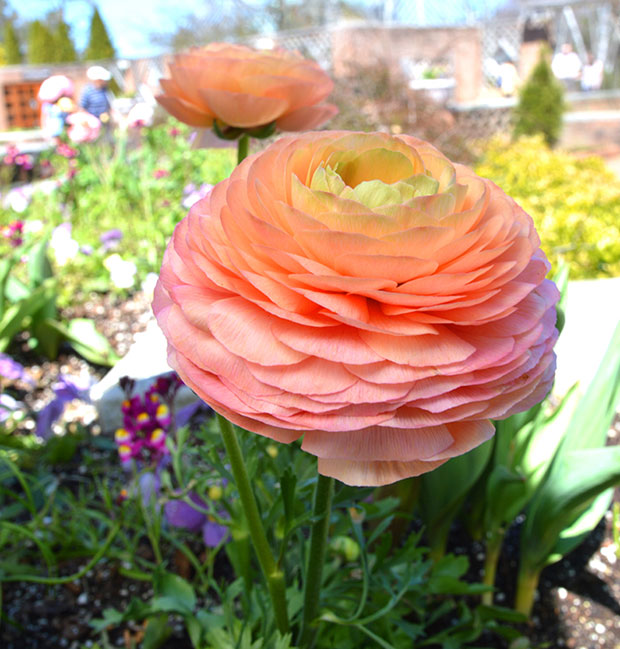
Deadheading and Pruning
Removing faded blooms improves the appearance of your ranunculus and forces the plant to produce more blooms. Cut the flower stem back to the level of the foliage.
Propagation
Ranunculus reproduces via an underground corm, an enlarged root like a bulb. These form a claw-like cluster of corms and roots.
- Allow the foliage of your ranunculus to die back naturally after blooming.
- Dig up the corms and allow them to dry in a cool, shaded area. The corms will shrink and become hard.
- Store the corms in a box or bag of peatmoss until ready for planting.
- Separate the corms into several sections for replanting. Each section with sprout and grow into a new ranunculus plant.
Growing from Seed
Ranunculus can be planted from seed, but it will take 3 to 4 months for them to bloom. Additionally, they have specific temperature requirements. While it probably isn’t advisable for beginners to grow them from seed, experienced gardeners may find success with this method.
- Fill seed starting trays with a soilless seed starting mixture.
- Press the ranunculus seeds into the surface of the soil, but not cover them. Ranunculus seeds need light to germinate.
- Mist the soil and keep it evenly moist. Covering the tray with plastic wrap will help retain moisture.
- Place the trays out of direct sunlight in an area with temperatures at 60 degrees during the day and 40 degrees at night.
- Transplant the seedlings to individual pots when they have 4 true leaves and move them to an area that receives bright, indirect light.
- Plant them to containers or in the soil outside once all danger of frost has passed in your area.
Cut Flowers
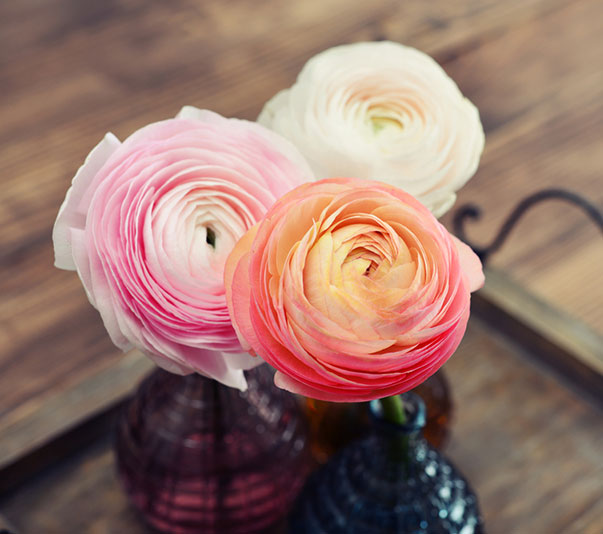
Ranunculus makes a delightful cut flower and will last up to 10 days in a vase.
- Cut them in the morning when they are their freshest. Choose ranunculus flowers that are just beginning to open.
- Place them in tepid water as flowers uptake warm water quicker than cold water.
- Add floral preservative or make your own with 1 teaspoon of household bleach and 1 teaspoon of table sugar to a quart of water.
- Change the water every 2 to 3 days or whenever you notice signs of discoloration.





